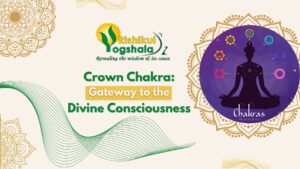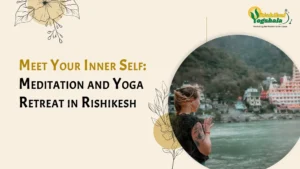Understanding the 7 Chakras: An Overview
Explore the main bioenergetic centres of the body and how to use them as a guide during your healing process. Modern conventional medicine has been taught to view health and the human body from a rational and limited ‘physical’ perspective. As such, it relies on similar paradigms to address illnesses and challenges to people’s well-being.
However, you who read this blog know that we are much more than that. And so, you long for a different, more integrative and spiritual perspective on your health. In this case, knowing the Chakras allows you not only to heal diseases but to prevent them but to know yourself and learn to listen to the voice of your soul. The 7 Chakras are energy centres in the body that influence your physical, emotional, and spiritual well-being, creating a balance for overall health.
Read on to learn the main details of the Chakras and how to heal by becoming aware of each one of them.
What are the Chakras?

In the same way that in the physical body we have many tissues, viscera and organs, in our bioenergetic body we have ‘organs’ or energy centers. Each one of them is in charge of processing different types of energy. Our Chakras can become ‘blocked’ or unbalanced due to stress and not listening to the soul.
Although there are many of these centers, we work mainly on the 7 Chakras to keep our energy balanced within our bodies for optimal health. Understanding the 7 Chakras helps you recognize the connection between energy flow and overall health, promoting emotional stability and physical vitality. The 7 Chakras serve as vital energy hubs in the body, each corresponding to different aspects of life, from survival instincts to higher consciousness.
What are Chakras like?
The word Chakra means ‘wheel’ or ‘vortex’. This is because the Vedas (ancient Indian masters) who coined the term visualized them that way, with a size of about 4 fingers in diameter each. When a Chakra is overcharged, it is imagined to be large in size, absorbing the energy of the others. In the opposite case, being in emptiness syndrome or weakened, it is imagined reduced or even ‘blocked’, and the energy does not flow in it or becomes cloudy.

The first Chakra or vortex, located at the base of the spine, is projected downwards, towards the earth, while the seventh at the crown of the head, points towards the sky. The other chakras, from the 2nd to the 6th, are projected both forward and backward. In addition, each of them is associated with one of the 7 colors of the rainbow, starting with the color red in the sacral Chakra, and ending with the pink color projected from the crown.
Where are the 7 Chakras located?
- They are aligned vertically parallel along your torso.
- First Sacral Chakra: Base of the back.
- Pelvic Chakra: Two fingers below the navel.
- Solar Chakra: At the solar plexus or pit of the stomach.
- Heart Center Chakra: In the middle of the chest.
- Thyroid Chakra: In the throat.
- Third Eye Chakra: Between the eyebrows or center of the forehead.
- Seventh Crown Chakra: On the crown of the head.
Becoming Aware Of The Chakras To Stay Healthy
The Chakras correspond to the bioenergetic dimension of the being, which is a bridge or intermediate level between the physical and spiritual dimensions. All ancient healing traditions maintain that before symptoms or physical problems appear, there are warnings in our life and at the energetic level (emotions, feelings, and calls from intuition) that were not heard. For these reasons, knowing them and learning when they are out of balance helps you prevent illness or holistically heal them, and live a happier life. Next are the basic precepts for this, inspired by questions that lead you to meditate and become aware of them.
Sacral Chakra: “Do I Feel Safe?”
This center, also called the Root Chakra, is associated with the color red. This means it is associated with instinct, perception of safety or danger, connection to the here and now, and being rooted in who you are. Your body is linked to the bones, bowel, and adrenal glands.
Also Read: 7 Health Benefits of Meditation Practice
When the First Chakra is balanced, you feel fear but are aware of it and more able to cope with it. The First Chakra teaches that a sense of security comes from spiritual peace and connection to your identity, not from material possessions, although a balanced Root Chakra will give you the discipline and cunning to survive and thrive in your life.
Signs of an Unbalanced Sacral Chakra
- An overloaded Sacral Chakra is associated with greed, phobias, anxiety, and paranoia. On a physical level: lumbar back pain and constipation.
- An emptied or weakened Sacral Chakra is linked to a lack of energy, mental dispersion, an attitude of dependence, poverty, or inability to be financially stable. On the physical level: diarrhea, physical weakness, fibromyalgia, bone degeneration, and problems digesting food.
Conclusion
Balancing the 7 Chakras can lead to improved health, enhanced creativity, and a deeper connection to your inner self and the world around you. Breathing is at the heart of yoga, serving as a bridge between our physical, mental, and emotional realms. By aligning your breath with your practice, you not only enhance your overall well-being but also connect more deeply with the natural rhythms of the seasons. Embracing this practice can lead to greater balance, vitality, and inner peace.
To fully experience the transformative potential of breath in yoga, consider joining one of our immersive teacher training programs in Rishikesh. Whether you start with our 200-hour Yoga Teacher Training or advance through our 300-hour and 500-hour courses, each program is designed to deepen your understanding of yoga and breathing techniques. Take the next step in your yoga journey and discover how our programs can elevate your practice and enrich your life.
For those interested in deepening their yoga journey, consider enrolling in a yoga teacher training program. Rishikul Yogshala Rishikesh, a leading Yoga school in Rishikesh, offers comprehensive courses like the 200 Hour Yoga TTC in Rishikesh and the 300 Hour Yoga TTC in Rishikesh. These programs are designed to help you master your practice and share the transformative power of yoga with others.
Last Modified Date: 27th September 2025















